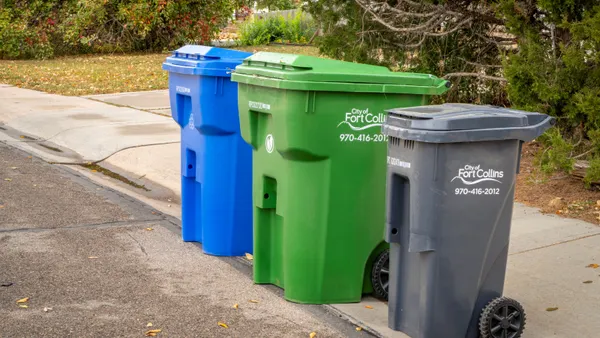Dive Brief:
- The Food Waste Reduction Alliance (FWRA) — a joint project of the Food Marketing Institute, the Grocery Manufacturers Association, and the National Restaurant Association — has released an updated guide of practices to help food manufacturers, retailers, and restaurants reduce food waste.
- The guidelines offer "case studies, model practices, and emerging solutions" from waste management and hunger relief sectors, according to a press release. The guide encourages companies to conduct waste characterization assessments — a process which is outlined in the guide by Waste Management.
- "The real value this project offers is the perspective of industry — compiled by companies for companies," noted Christy Cook, director of sustainability performance and field support for Sodexo. She added that it "highlights ways to recycle food waste such as recovering energy from food waste materials and redirection of organic materials."
Dive Insight:
As the issue of food waste grows across the globe, industries are coming together to prevent the waste in as many ways as possible. Patti Olenick, sustainability manager for Weis Markets, notes that approximately 80 billion pounds of food waste is discarded in U.S. landfills each year — an issue that the waste industry cannot tackle alone.
To help combat the problem, USDA and EPA announced in September a first-ever national food waste reduction goal, calling for a 50% reduction by 2030. However, this goal cannot be obtained without participation from food retailers and restaurants, which is where the "Best Practices Guide" comes into play.
In the guide, Waste Management outlines how companies can conduct a "waste characterization assessment," which is a process that can be applied for any size or type of facility.
"More complex operations may require additional effort like tracking waste on multiple days and/or analyzing waste hauling invoices and other documentation, but the basic process is the same: categorize and quantify," Waste Management notes. "Once you have established what kind and how much material you are discarding, this information is valuable in three key ways. First, you can create a baseline from which you can measure progress over time. Second, you can look for areas to reduce or avoid the generation of the waste and third, you can look for areas to reuse, recycle or otherwise find value in those materials outside of landfills."









